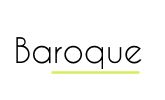 Early
1660s Early
1660s
French gentleman with a very richly plumed hat. Ribbons are worn in
abundance and the canions below the breeches and hanging over the
stockings are large. |
 Early
1660s Early
1660s
Gentleman in petticoat breeches with ribbon loops at the waist,
dancing. |
 Early
1660s Early
1660s
Proper deportment when bowing and greeting in falling band and
cloak. Holland. |
 1650-60 1650-60
Open kneed breeches with ribbon loops. The hat is tall with plumes
hanging down. France. |
 1650-60 1650-60
Open kneed breeches with ribbon lops all around the edge. Boothose
are worn, the hat is very tall. France. |
 1650-60 1650-60
Gentleman of the same painting wearing petticoat breeches over
close fitting breeches. France. |
 1650-60 1650-60
Open kneed breeches and canions. Cloak over one shoulder. France. |
 Boots
and hat worn indoors as it usually is. Only in the company of the
king must the hat be taken off, unless authorised by the king himself.
Holland. Boots
and hat worn indoors as it usually is. Only in the company of the
king must the hat be taken off, unless authorised by the king himself.
Holland. |
 1660 1660
Spectators at the day of departure of Charles II from Scheveningen
to England. Cloaks and cassocks over coats that are in length between
a short doublet and later coat. Holland. |
 1660 1660
Canions and hats with ribbons. Holland. |
 1660 1660
Tall hat and cloak worn over short doublet and very wide shirt
that billows out at the waist. Petticoat breeches with ribbon loops
and canions falling in flounces over the stockings. Holland. |
 1666 1666
The painter Wolfgang Heimbach. I am not sure though if there is
a specific meaning to the small skull cap worn on his head and underneath
the hat. It appears in many paintings. Denmark. |
 1666 1666
Falling band and red breeches with canions. Black coat, unclear
what the beige is coming from underneath the coat. Gloves. Denmark. |
 1666 1666
Wide collar of the earlier type, military style coat and bucket
top boots. It appears to be a man of the military rather than a civilian.
Denmark. |
 1666 1666
Skull cap again, long coat with red turn back cuffs and bucket
top boots. Denmark. |
 1666 1666
Plain black garments worn by an older man. |
 1666 1666
Two boys in small size versions of the adult clothing. |
 1666 1666
red ribbon loops at shoulder and in the hat and on the breeches.
Denmark. |
 1666 1666
Black boots and black plume in his hat. Wearing a cravat. Denmark. |
 1660 1660
Circular cloak seen from behind. Holland. |
 1660 1660
French fashionable gentleman in exaggerated outfit, a fashion
fop. Petticoat breeches and wide shirt under short doublet. Ribbon
loops all around the waist. |
 1660 1660
Short doublet and breeches with ribbon loops, but worn in a plain
version. Holland. |
 1660 1660
English country gentleman in old fashioned outfit of tight breeches
and wide collar. Tall hat and doublet with split sleeves. |
 1660 1660
Skittle players, this gentleman with large canions at the breeches.
Holland. |
 1660 1660
Same painting, the petticoat breeches are better visible, plain
version. Holland. |
 1660 1660
Same painting, youth holding his head in his hand. |
 1660 1660
Dutch gentleman with cloak draped across his chest and tall hat.
Holland. |
 2nd
Duke of Buckingham from after 1666 in the new fashion. The falling
band is still from the earlier years, but the waistcoat with the ribbons
and lace frills peeping from underneath the coat sleeve shows the
new fashion. 2nd
Duke of Buckingham from after 1666 in the new fashion. The falling
band is still from the earlier years, but the waistcoat with the ribbons
and lace frills peeping from underneath the coat sleeve shows the
new fashion. |
 Gentleman
who appears to be a fashion victim in blue silk stockings and a second
pair, probably boothose, falling down over them, worn with shoes.
Petticoat breeches with ribbons and short doublet. Gentleman
who appears to be a fashion victim in blue silk stockings and a second
pair, probably boothose, falling down over them, worn with shoes.
Petticoat breeches with ribbons and short doublet. |
 Admiral
de Ruyter in plain black clothes, the Protestant ideal. Holland. Admiral
de Ruyter in plain black clothes, the Protestant ideal. Holland. |
 English
gentleman in falling band, doublet and petticoat breeches of the early
part of the decade. English
gentleman in falling band, doublet and petticoat breeches of the early
part of the decade. |
 Similar
clothes to the gentleman o the left, same painting. Similar
clothes to the gentleman o the left, same painting. |
 Long
curly hair and falling band, worn with short doublet. Long
curly hair and falling band, worn with short doublet. |
 Similar
to the others, but apparently with very full breeches. Similar
to the others, but apparently with very full breeches. |
 Gentleman
fro after 1666 fishing in a long coat and low crowned hat. Gentleman
fro after 1666 fishing in a long coat and low crowned hat. |
 Gentleman
in an abundance of ribbons on the new style coat which is decorate
all over with broad gold braid. Gentleman
in an abundance of ribbons on the new style coat which is decorate
all over with broad gold braid. |
 Duke
of Lauderdale in open coat showing the many small round buttons. Duke
of Lauderdale in open coat showing the many small round buttons. |
 Dutch
gentleman at home in front of his writing desk wearing tight silk
stockings with his breeches. Dutch
gentleman at home in front of his writing desk wearing tight silk
stockings with his breeches. |
 Caricature
of a fashion fob by Roman de Hooghe showing the exaggerated version
of the long coat and short waistcoat. Caricature
of a fashion fob by Roman de Hooghe showing the exaggerated version
of the long coat and short waistcoat. |
 1661 1661
Charles II dancing in the Hague, wearing petticoat breeches, short
doublet and gloves. |
 1661 1661
Gentleman
of the same painting, with a cassock over his shoulder. The buttons
can be seen at the side seam. |
 1661 1661
James
Duke of York by Lely in yellow silks with canions. Yellow was the
colour of the Duke of York. |
 1662 1662
Plain
colours and open kneed breeches. Holland. |
 1662 1662
Black
garments, Protestant family. Holland. |
 1662 1662
Same
painting, slightly different colour, as plain as the others. Holland. |
 1662 1662
Back
view of petticoat breeches and doublet. England. |
 1662-65 1662-65
Young man in black, wearing fine cloths. Holland. |
 1663 1663
Louis XIV in a suit adorned with many ribbons and god laced or
embroidered. This is the French fashion e English tried to break away
from. |
 1663 1663
Same painting, petticoat breeches and large bows at the shoes. |
 1663 1663
Simpler version with full breeches. |
 1663-65 1663-65
Long circular cloak draped across the chest. Holland. |
 1664-65 1664-65
Slit sleeves on this short doublet worn by the Duke of Argyll. |
 1665 1665
Man on horseback. Holland. |
 1665 1665
Marquis of Tweedall in the very new fashion. Perhaps the dating
of the painting is a bit too early though. Do study this painting
closely, because it shows the features very well. England. |
 1665 1665
Young lord in by now old fashioned clothes. Compare this one to
the Marquis of Tweedall. |
 1666 1666
More sober version of the short doublet. |
 1666-68 1666-68
Curious slashed doublet. Holland. |
 1667 1667
Another perfect example of what was introduced in 1666 and to
what heights of ribbons and lace it came shortly. England. |
 1667 1667
Louis XIV in a brocaded coat and embroidered full breeches. |
 1667 1667
John Leslie in sober version of the long coat. Ribbon bows in
abundance at the sleeves. England. |
 1667 1667
Another interesting example to be studied, this time with a falling
band still. England. |
 1667 1667
Louis XIV in what was called by Charles II going 'away' from the
French fashion, yet the French king appears in the same combination.
Brocaded though and embroidered. |
 1667 1667
Young man in long coat, still wearing boot hose. England. |
 1667-68 1667-68
Dutch gentlemen, one with cloak. |
 1668 1668
Dutch gentleman in long coat and with low crowned hat. |
 Early
1660s, doublet from the back with cloak over one shoulder. Early
1660s, doublet from the back with cloak over one shoulder. |
 Louis
XIV from a court almanac. Interesting again to note though this is
apparently late 1660s, he is wearing the long coat. Louis
XIV from a court almanac. Interesting again to note though this is
apparently late 1660s, he is wearing the long coat. |
 Late
1660s Late
1660s
Gentleman in red coat, out to riding. The sleeves are fashionably
short. |
 Late
1660s Late
1660s
Equally fashionable gentleman in the long coat with short sleeves
and turn back cuffs but without the exaggeration of an abundance of
laces and ribbons. |
 French
nobleman in early 1660s doublet with slit sleeves, tall plumed hat
and open kneed breeches with ribbon rosette. French
nobleman in early 1660s doublet with slit sleeves, tall plumed hat
and open kneed breeches with ribbon rosette. |
 Louis
XIV in late 1660s coat with short sleeves and very full breeches all
made from brocade and embroidered. Louis
XIV in late 1660s coat with short sleeves and very full breeches all
made from brocade and embroidered. |
|









